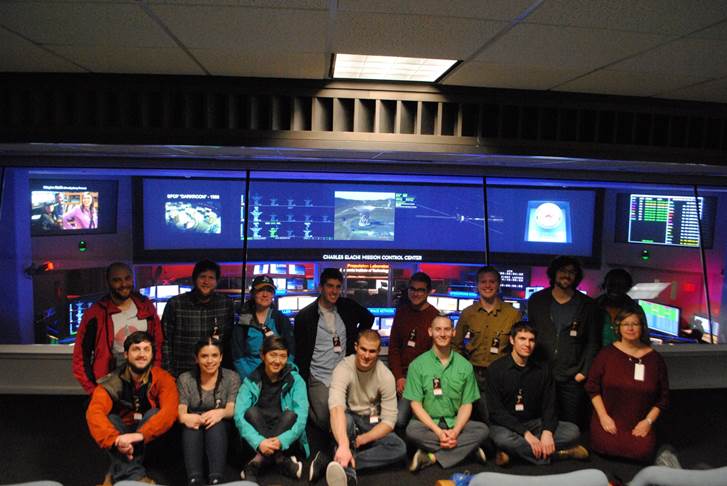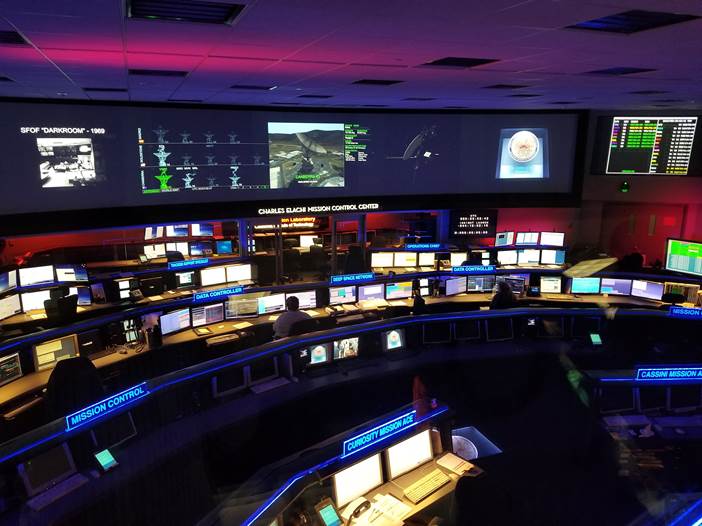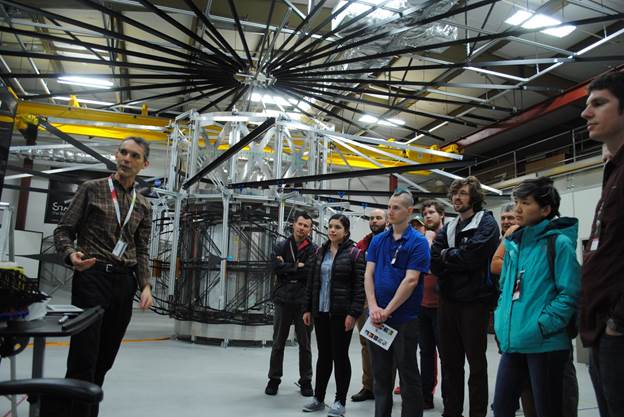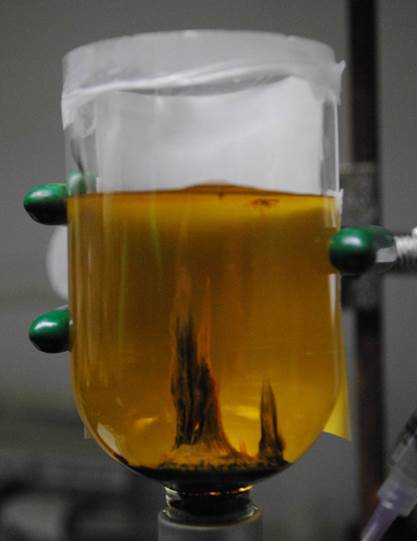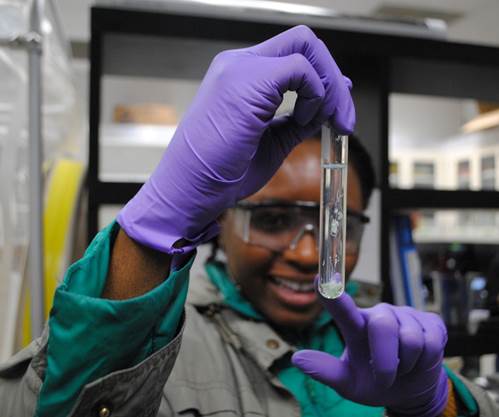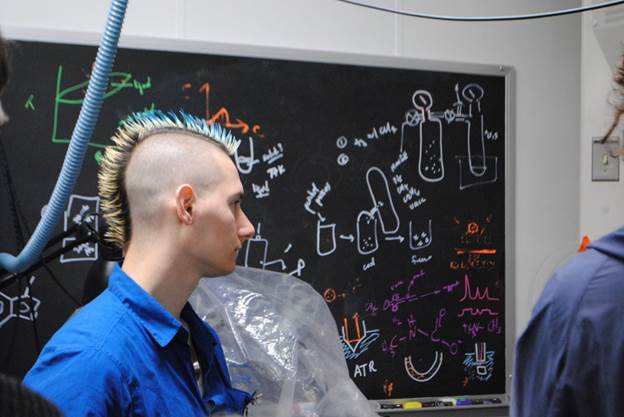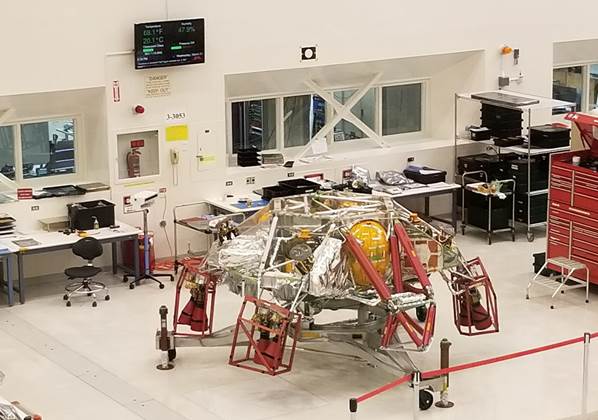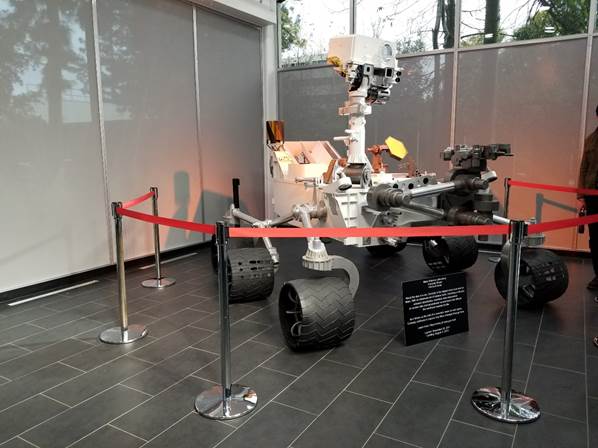|
|
|
Above: The UW Astrobiology group in the Charles Elachi Mission Control Center. The Mission Control Center
is the hub of JPL’s Space Flight Operations Facility. Using NASA’s Deep Space
Network of radio antennae, JPL engineers uplink
commands to and downlink data from all Solar System exploration missions Below: A view overlooking into the Mission Control Center
|
|
Above: UW AB students (right) touring the JPL starshade lab with Deputy Program Chief Technologist of
the NASA Exoplanet Exploration Program, Brendan Crill
(left). A starshade is a spacecraft concept that
would fly in front of a telescope to block the light of distant stars to
reveal exoplanetary systems otherwise hidden beneath the intense glare of
their parent stars. A demonstration starshade can
be seen pictured behind the students rolled into a cylinder and capable of
fitting inside a rocket fairing. |
|
Left: Ever wondered what hydrothermal systems on the
ocean floor might have looked like back in the Archean geological eon? JPL
scientists in the Astrobiology Lab seek to answer that question by growing
their own mini hydrothermal vent systems by injecting simulated vent fluids
into simulated Archean oceans. Below: Not only did the UWAB students get
to see and learn about growing simulated hydrothermal vents, they got to
experience it for themselves by creating their own! Here UW AB student Osa
Igbinosun points to the abiotic growth of… iron…
|
|
Left: UW AB student Marshall Styczinski
learns how to create high pressure ices. |
|
Right: Another
exciting part of the JPL visit was You can
learn more about the Mars 2020 mission here:
https://mars.jpl.nasa.gov/mars2020/ |
|
Right: A scale model of the Mars Curiosity Rover currently
exploring the habitability of mars in the past. The rover was built and is controlled at JPL
and has been exploring Mars since 2011. |
|
THIS E-NEWSLETTER WAS SENT BY:
|

